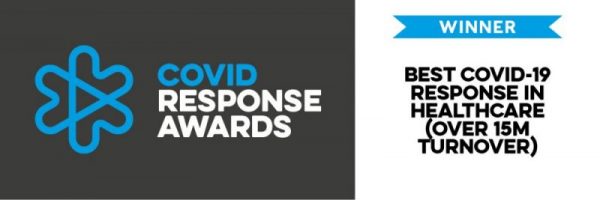In This Section
What is Tennis Elbow?
Tennis Elbow (Lateral Epicondylitis) is a condition causing pain and tenderness around the outer aspect of the elbow joint. It commonly affects people who play racquet sports (hence the name) or manual workers though can occur in any individual.
What causes Tennis Elbow?
Tennis elbow is an overuse condition affecting the common extensor tendon (this is the tendon that attaches the extensor muscles of the wrist to the outside of the elbow joint.) With the palm facing down, when contracted the extensor muscles are the muscles that pull the wrist up to 90 degrees. Degeneration within the tendon due to overuse results in microscopic tears causing the symptoms in tennis elbow. In chronic tennis elbow calcification can occur around the insertion of the tendon and, in a small number of cases, larger tears can occur. However for the vast majority of patients the condition is not serious and can be self-managed.
What are the symptoms of Tennis elbow?
The usual symptoms are pain located around the outer aspect of the elbow over the bony prominence called the lateral epicondyle. The pain is triggered by actions that extend the wrist eg lifting with the palm down, wringing out a dishcloth or pouring from a heavy jug/pan. A tender spot can usually be felt over the bone and just in front of it in the tendon itself.
How is it diagnosed?
Diagnosis is usually made from the patient’s history and a simple examination without the need for special investigations. Ultrasound or MRI scanning may be done if there is uncertainty about the diagnosis.
How can I manage my Tennis Elbow?
Most cases of tennis elbow can be self-managed with simple things such as modification of activities, simple exercises and if necessary, painkillers. In a small number of cases injections may be done around the tendon and occasionally, in unmanageable cases, surgery may be an option.
What are the symptoms of Tennis elbow?
- Historically, corticosteroid (cortisone) injections have been done for tennis elbow. This involves a steroid being injected around the tendon and its insertion onto the bone However, some studies have suggested that patients who have injections have a poorer outcome long term, with ongoing or recurrent symptoms being more likely. Steroid injections also have potential complications of tendon rupture and atrophy of the tissue resulting in permanent dimpling of the skin around the injection site.
- In a small number of severe, chronic cases surgery may be necessary. The surgery is aimed at releasing strain on the tendon, removing degenerative tissue and promoting healing
What is Golfer’s Elbow?
Golfer’s Elbow (Medial Epicondylitis) is a condition causing pain and tenderness around the inner aspect of the elbow joint. It commonly affects people who play golf (hence the name) and sports that involve throwing, such as cricket and baseball, climbing or manual workers. However, it can occur in any individual.
What causes Golfer’s Elbow?
Golfer’s elbow is an overuse condition affecting the common flexor tendon (this is the tendon that attaches the flexor muscles of the forearm to the inner side of the elbow joint) The flexor muscles are the muscles that curl up the fingers, which, when contracted, allow you to grip. Degeneration within the tendon due to overuse results in microscopic tears, causing the symptoms of golfer’s elbow. In chronic golfer’s elbow calcification can occur around the insertion of the tendon and, in a small number of cases larger tears can occur. However for the vast majority of patients the condition is not serious and can be self-managed.
What are the symptoms of Golfer’s Elbow?
The most common symptom is pain around the inner aspect of the elbow, over the bony prominence called the ‘medial epicondyle’. The pain is triggered by actions that require gripping e.g. lifting with the palm up, squeezing or pulling. A tender spot can usually be felt over the bone and just in front of it in the tendon itself.
How is Golfer’s Elbow Diagnosed?
Diagnosis is usually made from the patient’s history and a simple examination without the need for special investigations. Ultrasound or MRI scanning may be done if there is uncertainty about the diagnosis.
How can I manage Golfer’s Elbow?
Most cases of golfer’s elbow can be self-managed with simple things such as modification of activities, simple exercises and if necessary, painkillers. In a small number of cases injections may be done around the tendon insertion and occasionally in unmanageable cases, surgery may be an option.
Further Treatment
- Historically, corticosteroid (cortisone) injections have been used to treat golfer’s elbow. This involves a steroid being injected around the tendon and its insertion onto the bone However, some studies have suggested that patients who have injections have a poorer outcome long term, with ongoing or recurrent symptoms being more likely. Steroid injections also have potential complications of tendon rupture and atrophy of the tissue resulting in permanent dimpling of the skin around the injection site
- In a small number of severe, chronic cases surgery may be necessary. The surgery is aimed at releasing strain on the tendon, removing degenerative tissue and promoting healing
Vita is an award-winning, CQC registered healthcare provider












